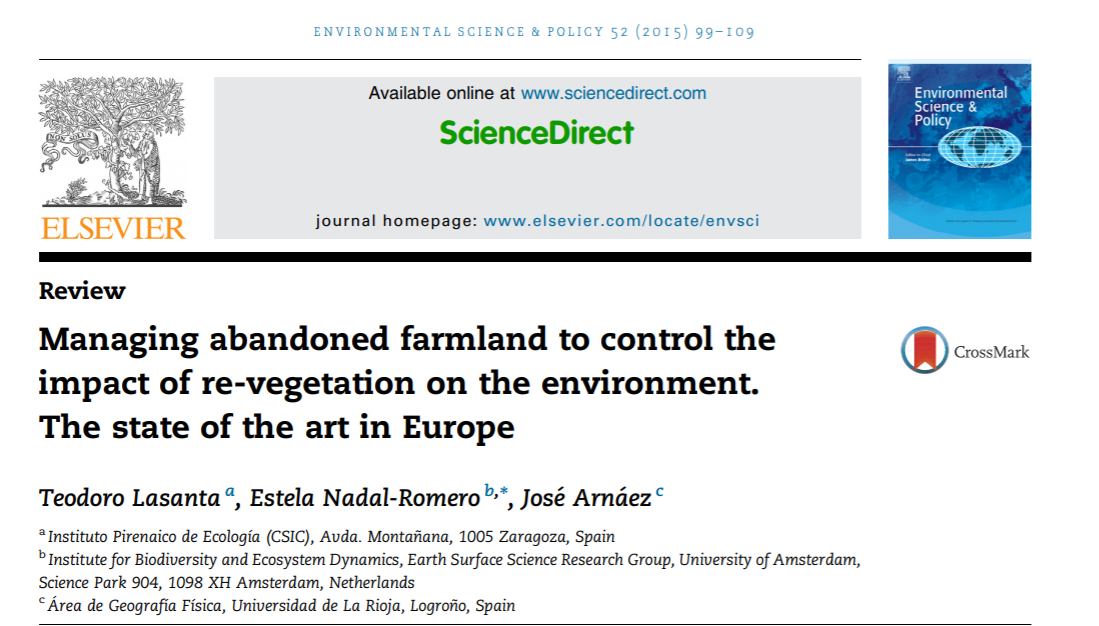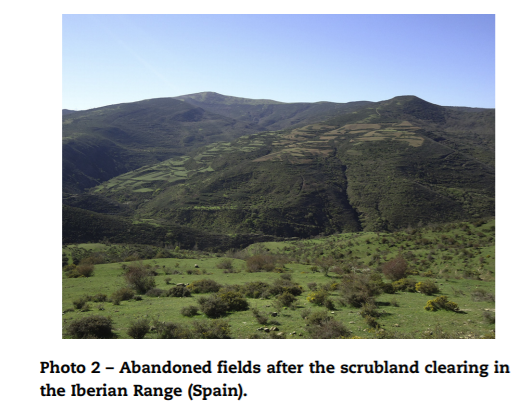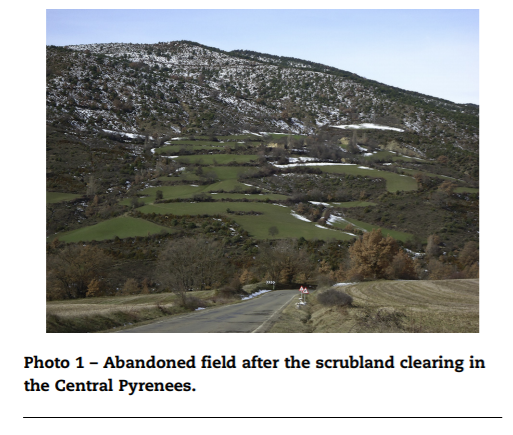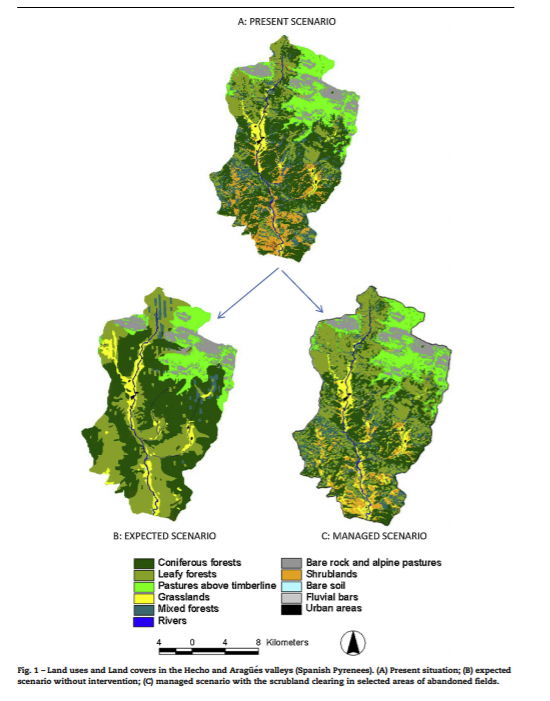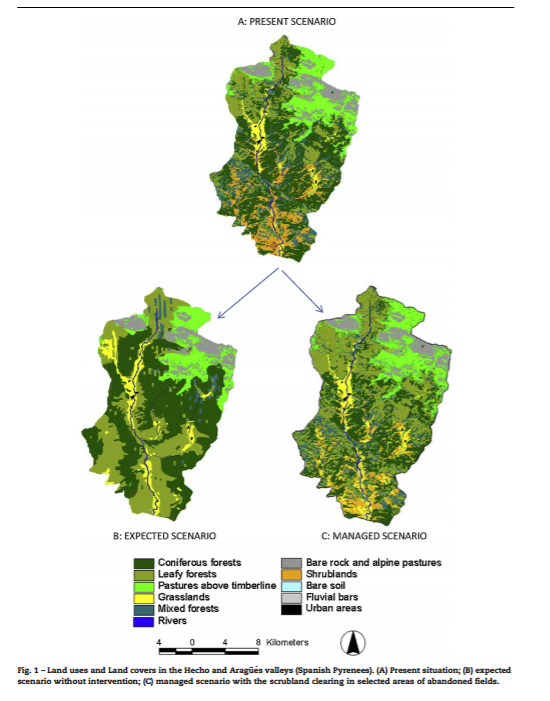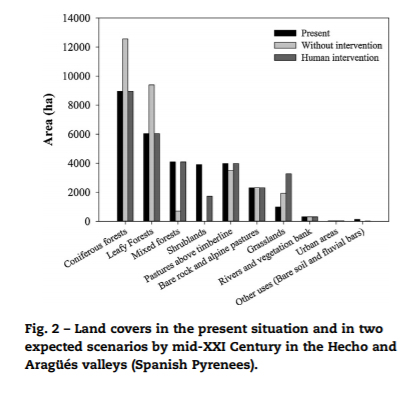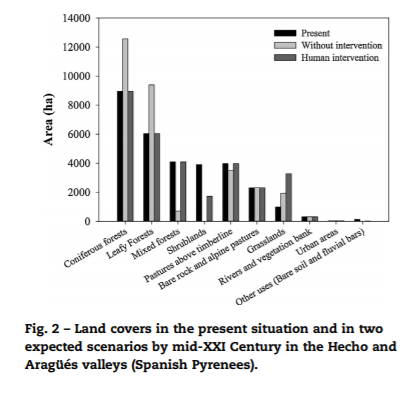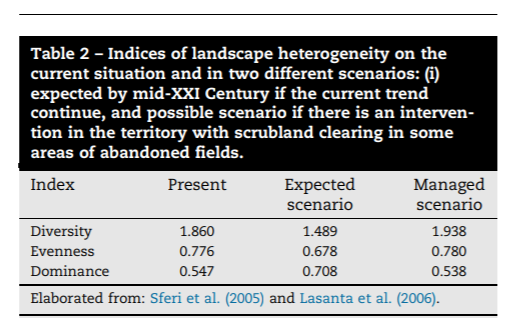1/ in today’s #rewildingscience paper we look at Lansanta et al’s 2015 review. Which brings together arguments for and against control or naturalisation of abandoned farmland #rewilding #agriculture #farmland
2/ Most visibily this agricultural abandonment leads to revegetation of land through secondary succession. The paper highlights how this process has the potential to reduce soil erosion, increase biodiversity and create carbon sinks.
3/ Conversely, it can also reduce many semi-natural, open habitats that were formerly maintained by traditional land management, causing significant impacts on the landscape, biodiversity, the ecosystems dynamics and landscape sustainability
4/ It begins by explaining that large areas have undergone a revegetation process as a result of land abandonment since the mid-20th century a trend that is likely to continue, producing significant environmental and landscape impacts
5/ The paper states that abandonment initially affected mountain hilltop communities before spreading to the lowlands as a result of policy change in the countries of the former USSR, measures taken by CAP to reduce production, and building on arable land of tourist resorts
6/ The authors also mention the role emigration to cities has played in the reduction of interest in pursuing agriculture as a profession.
7/ In recent decades, around 75% of arable land in mountainous areas is no longer worked across Europe. With an estimated 88,000km2 of land impacted by abandonment, including 10-20% of agricultural land in Eastern Europe
8/ The review discusses the environmental impact of such abandonment, talking through the positive, negative and variable effects of abandonment. Found in the table below
9/ Rewilding is listed as a variable effect, which the authors justify as to some it promotes a more natural landscape, reduces erosion and recovers wild animals, however to others European mountain are a highly cultural, humanised landscape, features that should not be lost
10/ The paper then goes on the look at the proposals for managing abandoned land. With two main theories considered i) do not intervene and allow the natural process to continue; or (ii) take a more critical attitude and manage the land to control negative environmental impacts
11/ Research can be found that suggests there is no consensus for either approach, which the authors suggest means we need a more participatory process towards stakeholder engagement on the issue
12/ The arguments for letting nature take its course say that revegetation leads to rewilding ecosystems, which could allow an increase in wild ungulates filling the traditional role of extensive livestock farming in maintaining a diverse and stable landscape
13/ Mediterranean landscapes are also likely to be more sustainable with greater rewilding, as it reduces the risk of soil erosion. Regeneration of forest could provide some ecosystem services, such as carbon sequestration, and serve as a leisure area for many city dwellers.
14/ Finally, they suggested that those who want to keep using mountain hillslopes for traditional agriculture, underestimate the huge amount of work that humans have to do to make it sustainable.
15/ On the other side of the discussion, there is a belief that the advantages of rewilding are more illusory than real. Emphasising the highly humanised nature of Europe
16/ It is argued that the landscape in Mediterranean regions is cultural and formed by farming hillsides and extensive livestock pasturing with evidence that suggests abandoned lands need effective management to maintain their functionality to support sustainable development.
17/ The review also highlights other views, including that some intervention is needed to lessen the negative effects of abandoning land and preventing a fully rewilded landscape. This could provide an opportunity for management and the set up new land uses
18/ There is also a view that cultural landscapes are only preserved because they are functional; therefore, cultural landscapes should require maintenance work to preserve their environmental, and cultural functions.
19/ Diversification in land management is also frequently referenced, with proposals including allowing areas requiring protection to be more natural, while the rest of the land must be sustainable.
20/ The expansion of agri-forest systems to promote pasturing, while at the same time promoting development of tourism, the fauna, hunting and outdoor sports is also proposed
21/ The paper then moves on to more practical solutions for controlling revegetation after land has been abandoned. These include the use of animals as a tool to manage abandoned farmland both for production and environmental purposes
22/ The use of extensive livestock farming can change a landscape of scrub to a different one, with a mosaic of land use comprising forest, pasture, shrub and meadowland. This landscape can incorporate a high production value, and important ecological and cultural value
23/ On top of this, it can regulate the geo-system and support of a wide variety of habitats. The combined use of extensive livestock and scrubland clearing in selected areas with abandoned fields is also proposed by various authors
24/ The authors present an analysis of the predicted scenario for the mid-21th century if the present rate of re-vegetation continues (Fig. 1B), or if scrubland clearing will be carry out in selected areas of abandoned fields (Fig. 1C).
25/ It shows that, at present, the area for the scenario with scrubland clearance is more fragmented, with small patches spread across the landscape. However, in the predicted scenario, the landscape will consist of just a few, very large patches.
26/ Pine and deciduous forest will increase in size (Fig. 2) to cover from 48.8% currently to 71.3% in the future scenario. On the other hand, mixed forest will decrease from 4091 ha to 698 ha.
27/ Sub-alpine and alpine pastures will also decrease, while meadows will double in size. Scrubland will disappear. Changes between the present and the managed scenarios would be reduced to a decrease in the area of scrubland, and an increase in meadow
28/ Table 2 gives information on the structure of the landscape in the three situations. Diversity would be higher for the shrub clearance scenario, while it would be reduced in the predicted scenario.
29/ In summary, not intervening on the land would mean a much more uniform and less fragmented landscape, with a loss of biodiversity and greater risk of fire
30/ I think this review does a good job at highlighting the divisions and possible solutions to the land abandonment issue, without really going one way or other. It suggests a nuanced approach whereby some abandonment and some intervention would produce the best outcome
31/31 There is definitley more to unpick than a twitter thread can achieve, so i would reccomend reading the whole paper. Link can be found here:
…https://www-sciencedirect-com.uoelibrary.idm.oclc.org/science/article/pii/S1462901115001094?via%3Dihub
#rewilding #rewildingscience
…https://www-sciencedirect-com.uoelibrary.idm.oclc.org/science/article/pii/S1462901115001094?via%3Dihub
#rewilding #rewildingscience

 Read on Twitter
Read on Twitter